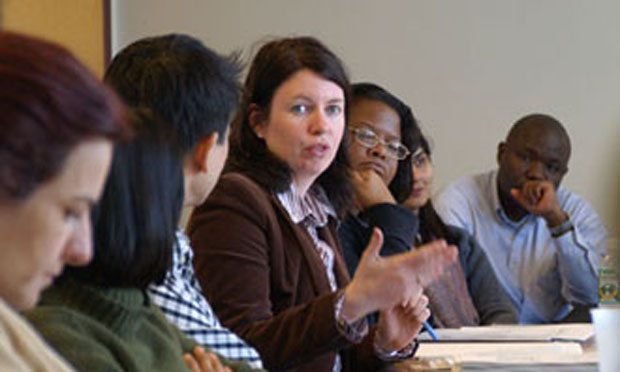
In December 2014 the Knight Foundation and Carnegie Corporation announced continued funding for an effort to reform journalism education. Below, John Wihbey of Journalist’s Resource reflects on the progress of the initiative in the context of wider media trends.
The recent media “boomlet” around explanatory journalism — from Vox, FiveThirtyEight and the New York Times’ The Upshot to Bloomberg’s QuickTake and The Conversation — has garnered no shortage of attention and interpretation. A long-term trend? Is there a market for it? Is this a bubble?
The fate of these projects remains unknown, but one under-discussed aspect of their rise is what it may all signal about the evolving information and news marketplace: Because of the interconnected nature of global information and communications technologies, the “who, what, when, where” of events is now often rapidly established and disseminated across media platforms. In many cases, the basic facts are known quickly and universally, and thus there is little need to report them out redundantly. Social media, sensors, automated data streams and other global “eyes and ears” will only accelerate this dynamic.
Hence, the more-rapid production of the interpretive “why” — reporting the wider context — becomes a kind of new frontier, and increasingly a market imperative, for journalists.
Nicholas Lemann, the immediate past dean of Columbia’s Journalism School, likes to say that journalism is moving from a “hunter-gatherer” model to a value-added profession. If the first phase of the Web compelled journalists to speed up, the second phase — the one we are currently in — demands greater depth.
At Journalist’s Resource, part of the pioneering Carnegie-Knight Initiative on the Future of Journalism Education, we’ve spent the past few years building a “knowledge infrastructure” to help support this kind of journalism. Whether that’s synthesizing the latest research on gun violence or providing primers on interpreting regression analysis and reading social science research — and making deeply wonky material deadline-friendly — our project provides a scaffolding during a time of transition. Our mission is not to be encyclopedic like our friends at Wikipedia, but we point the way and model the habit of the informed “literature review.”
We want the operative question to be: What does the research say?
If journalists are to succeed in this new environment, they must train accordingly — and differently. For nearly a decade the Carnegie-Knight Initiative — a coalition of many of the nation’s premier journalism schools — has been focused on two goals: the adoption of digital technologies and of knowledge tools. Training the next generation of professional reporters and editors means changing not only the delivery and character of stories but the very way that journalists engage with information. The Carnegie-Knight Initiative has helped bring a whole new generation of journalists into the profession with wider skill sets.
The 21st century has challenged journalism in other ways, in particular the decline of public trust in the press and the financial crisis that has deeply shaken the media industry.
And then there is the rise of ubiquitous, frequently bald-faced, misinformation and disinformation. This phenomenon isn’t new — “[I]t seems to me that lying has reached such epidemic proportions in our culture and among our institutions in recent years, that we’ve all become immunized to it,” the late Washington Post editor Ben Bradlee said in a speech at Harvard more than two decades ago — but by almost any measure, the Web has made the problem immensely more challenging. So too has the rise of PR: There are currently 4.6 “communications professionals” for every journalist in the United States, according to a Pew Research Center analysis. And because politicians and corporations alike can use digital streams to “go direct” to audiences, more spin and half-truth than ever is being broadcast to the public.
For journalism to thrive amid these challenges there must be a massive, renewed push on the twin areas of focus of the Carnegie-Knight Initiative. First, in this pitched battle for public attention and mind-share, news media must tell more compelling stories — amazing, creative, emotionally and intellectually provocative stories that will spread far and wide — and build audiences where they are growing and migrating, including mobile devices and social media. They must be successful in the attention arms race. Second, media outlets must prove themselves more reliable and deeper than other sources of information available to the public.
To do this at the speed of the Web requires not only a sharp intellect and deeper subject-matter expertise, but also a kind of athletic mental training that involves knowledge about how to use knowledge, and the digital tools that make this possible.
“When reporters must file quickly, without the opportunity to observe or conduct interviews, they have no place to turn except to what they already know,” writes Thomas Patterson, the Shorenstein Center’s research director and the Bradlee Professor of Government and the Press at Harvard, in his 2013 book Informing the News: The Need for Knowledge-Based Journalism. “Knowledge is the best remedy for hastily concocted, wrongheaded story lines.”
These are tough times for the media industry. But armed with deeper knowledge and better digital skills, journalists will be in the best position possible to compete in this new information marketplace.
______
Note: This post was originally published at the Knight Foundation Blog.
Keywords: journalism education, partisan media, digital tools
